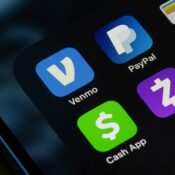Steve Weisman is a lawyer, college professor, author and one of the country’s leading experts in cybersecurity, identity theft and scams. See Steve’s other Con Watch articles.
Identity theft can be a high-tech, low-tech, or no-tech crime. While we tend to focus our attention on high-tech tactics — such as spear phishing emails — identity theft by way of old-fashioned snail mail is making a comeback.
How Thieves Steal Your Mail
Mail thieves may use no-tech tactics, such as covering a plastic bottle in glue and lowering it into blue public mailboxes, to snatch your sensitive mail. Just in the last year, police and postal inspectors in the Bronx made 150 arrests for this type of mail theft, according to Donna Harris of the U.S. Postal Inspection Service.
Your mail is not only vulnerable in public mailboxes, but also in your own home mailbox. Thieves look for checks, credit card bills, bank statements, and any other material that can be parlayed into an illegal profit through identity theft.
Some identity thieves take mail theft to the extreme. Juan Carlos Maldonado recently pleaded guilty to the armed robbery of a postal carrier for 800 pieces of mail, which he and his gang used for identity theft.
Most identity thieves are much more subtle. They merely submit a change of address form to the U.S. Postal Service in your name either in person or online. This results in your mail being sent directly to the identity thief.
One way the USPS tries to prevent this type of fraud is by sending a letter to your old address confirming that you have changed your address. However, this precaution has been circumvented by clever identity thieves who submit a form to the post office to hold your mail (as many people do when they go on vacation). This enables the identity thief to gain extra time before the scam is discovered.
What Thieves Do with Your Mail after They Steal It
Consider your mailed credit card payment. A thief will not only gain access to your credit card number, which he can use to make charges to your account, but can also alter the check you wrote to make it payable to the criminal.
Thieves can also fill in a change-of-address form on the back of your credit card bill and send it back to the credit card company to gain more time to illegally use your credit card. You may not notice anything is amiss until you realize that you haven’t received a bill recently.
More sophisticated criminals steal the bank account information from the check that you send with your paid bills, which includes not just your account number but also the routing number for the bank. With this information, they can buy stuff online and can even make counterfeit checks, which are easily created with readily available software. For example, in 2013, an identity theft ring in Denver stole checks sent to some Denver Broncos cheerleaders and used the information to create counterfeit checks.
Stolen checks can also be altered through an old-fashioned technique called washing, where common bleach is used to erase the name and amount on a legitimate check. Thieves then change the name and amount.
Protecting Yourself from Snail Mail Identity Theft
How many of us have put an envelope containing a bill and a payment check into our own home mailbox and lifted the red flag on the side? Unfortunately, this also alerts identity thieves driving through neighborhoods and makes their job much easier.
- Consider using a locked mailbox that cannot be easily broken into. While even locked mailboxes are not terribly secure, identity thieves are often lazy and will not bother with them.
- Be aware of the time of day your mail is generally delivered and retrieve it as soon as possible.
- Pay your bills electronically. Despite concerns about the security of online transactions, it is safer to pay your bills online than through mailed checks.
- If you must pay by check, use a gel pen, which you can obtain at most office supply stores. The ink from gel pens cannot be “washed” and changed.
- Never leave outgoing mail with checks or sensitive information in your own mailbox for your mail carrier to retrieve. Mail it directly from the post office.
- If you have not received any mail for a couple of days, check with your local post office to make sure that no one has had your mail forwarded.
Become a Saturday Evening Post member and enjoy unlimited access. Subscribe now



